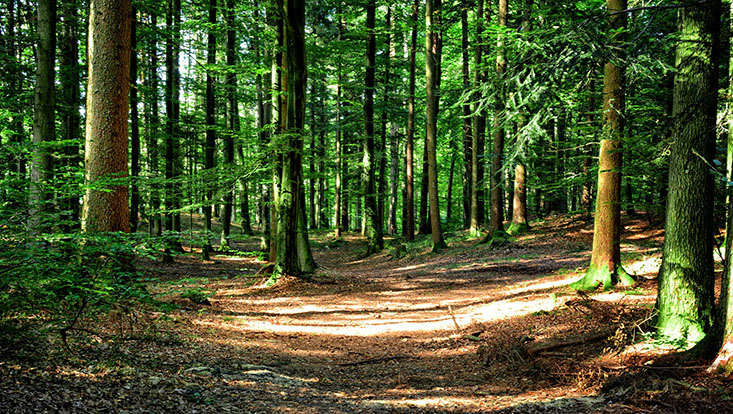Our forests: on a collision course with climate change
14 October 2019, by Prof. Dr. Michael Köhl, CEN Universität Hamburg

Photo: Pixabay - Manfred Antranias
Our forests make essential contributions to climate protection: they absorb CO2 from the atmosphere, and store it. Further, many long-lived wood products, which can be manufactured using comparatively low-emissions methods, can store carbon for extended periods of time. Taken together, the forests and wood products store roughly 14 percent of Germany’s annual CO2 emissions, which we can’t do without if our goal is to effectively reduce greenhouse gases. But vast expanses are now characterized by extreme dryness and dying trees.
At Universität Hamburg’s Center for Earth System Research and Sustainability (CEN), my team and I are investigating how our forests can be prepared for climate change. In this regard, rising temperatures – which shouldn’t pose a problem for indigenous tree species, at least not initially – aren’t the main problem; extreme dryness is. But forests have a tremendous ability to adapt. Why? Because trees have enormous genomes, with up to eight times as much genetic material as human beings. As such, among the virtually innumerable beech seedlings in a springtime forest, there could easily be some that can cope with extreme dryness. Nevertheless, if there are several dry years in a row, the situation can become critical: in 2018 more young trees than usual died because of the lack of rain.
That being said, at the moment the bark beetle is what’s doing the most damage. It’s especially a threat to spruces, which, at 28 percent, are the most common tree species in German forests. Thanks to the rising temperatures, this pest is now reproducing faster. To make matters worse, the trees, weakened by heat, are now less able to withstand its attacks. Important forms of direct action to be taken include checking forests for these beetles on a weekly basis, and promptly removing any infested wood.

At the same time, forestry experts need to refine adaptation strategies for forests. The results of climate simulations show that future summers will likely be even hotter and drier. If emissions continue to rise at the current rate, by the year 2100 we can expect to see up to five additional heat events in Northern Germany, and as many as 30 more in Southern Germany, per year. During these events, temperatures break the 30-degree mark for at least three consecutive days. Moreover, future scenarios call for much less rain in Southern Europe, and more in Scandinavia. Storms, heavy rains and other meteorological extremes could also become more frequent.
Yet the latest simulations only reach to the end of the century. Forests require extremely long-term planning – after all, by 2100 the trees planted today won’t even have completed their Umtriebszeit: the time that a tree needs before it can be considered “ready for harvesting” from a forestry perspective. Accordingly, in a sense researchers are “flying blind” in this regard, and have to bear a broad range of potential developments in mind.
One thing is certain: some regions will no longer be suitable for our native tree species in the future. Consequently, the beech will most likely migrate to higher elevations in the Mittelgebirge, while the oak will expand into lower-lying regions. Spruce and pine forests will gradually but completely disappear from increasingly dry regions. But we can’t simply expect the trees to accomplish this massive migration on their own: their lifecycle is too long for their natural adaptation to keep pace with climate change. As such, we need to lend a helping hand – by planting a site-specific and climate-adapted selection of tree species, and by adopting forestry approaches that also reflect forests’ vital role as guardians of the climate.
Michael Köhl
Prof. Michael Köhl’s research focuses on sustainable forestry and international forest policy in Europe and the Tropics.
Newspaper: This article was first published as a guest article in the Hamburger Abendblatt as part of a monthly series on climate research. Find all articles of the series here.


